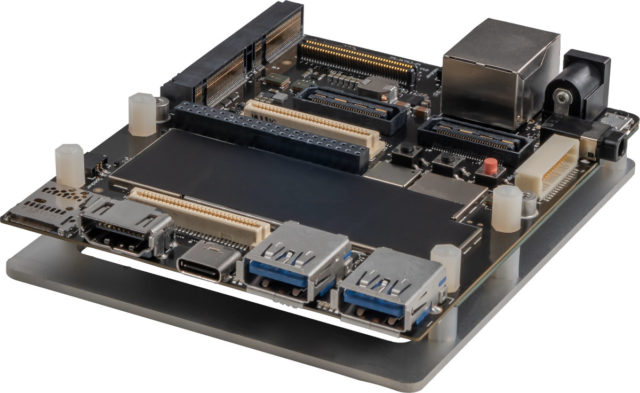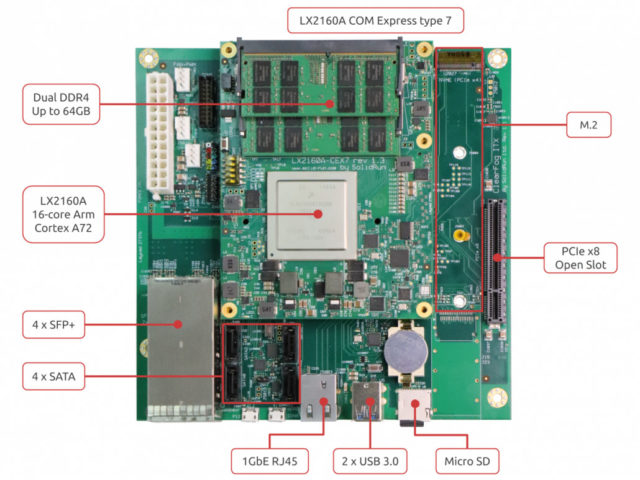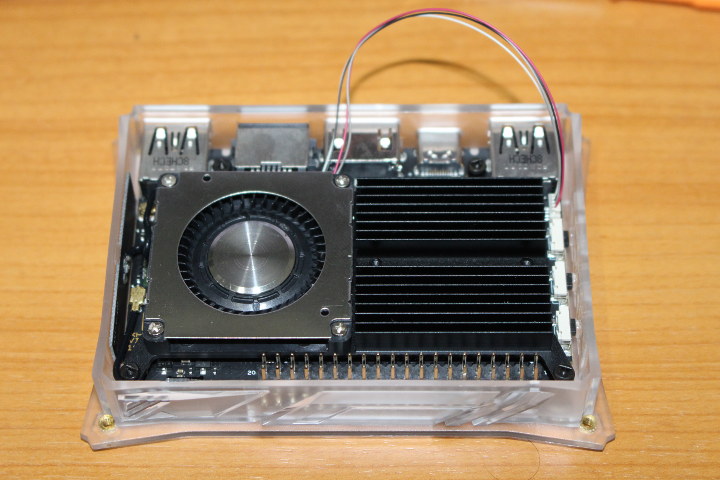While companies like Hardkernel, Raspberry Pi, Orange Pi, and FriendlyArm offers affordable, great little Arm Linux development boards that are suitable for many projects, in some cases, your requirements may lead you to spend a bit more for either extra CPU power, more memory, AI processing power, faster I/Os and so on.
That’s why I did a list of the most powerful Arm single board computers in late 2017, but with over three years passed since then an update is warranted. The boards from the list must be easily purchasable from individuals (with the cash to spare) or small companies, so we’ll exclude hard-to-source hardware, as well as Arm server boards like Ampere eMAG motherboard, that do not really qualify as single board computers.
Snapdragon 888 Mobile Hardware Development Kit
While there are plenty of Cortex-A72/A73 development boards around, it’s much hardware to find one with more recent Cortex-X1 or Cortex-A78 cores, and Lantronix Snapdragon 888 Mobile Hardware Development Kit is one such rare platform.
Equipped with Snapdragon 888 octa-core processor (1x Cortex-X1 core, 3x Cortex-A78 cores, and 4x Cortex-A55 cores), the board also boasts 12GB of LPDDR5 RAM, and 256GB of UFS storage, HDMI 2.0 & DisplayPort 1.4 video outputs, support for up to six cameras, and much more.
It’s mostly designed for Android app development, and to help OEMs get started with the development of Snapdragon 888 based mobile devices.
All those goodies will cost you with the board selling for $1,349, and the full development kit with display and camera boards goes for around $2,600.
Jetson AGX Xavier for AI & Robotics
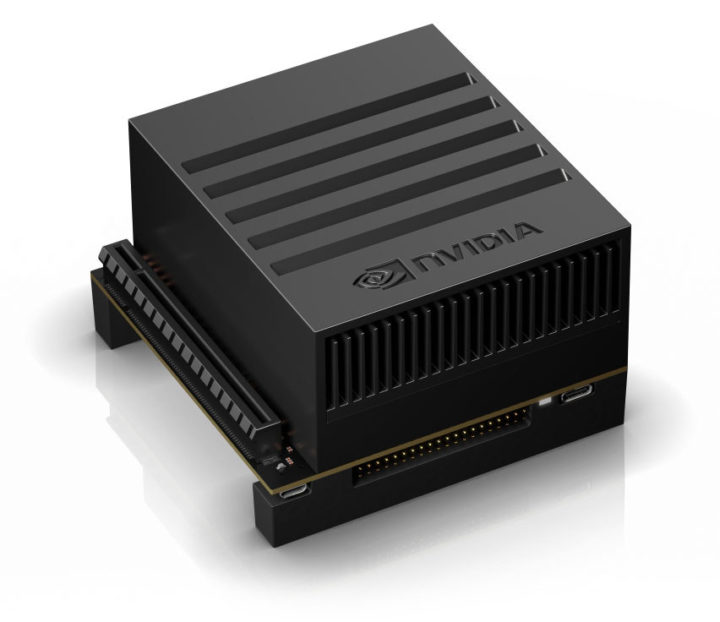
The devkit supports the Ubuntu-based NVIDIA JetPack, DeepStream SDKs, as well as CUDA, cuDNN, and TensorRT software libraries, and targets robotics projects with powerful AI processing requirements such as autonomous vehicles.
NVIDIA Jetson AGX Xavier developer kit can be purchased on Amazon for $699.
Qualcomm RB5 Robotics Platform
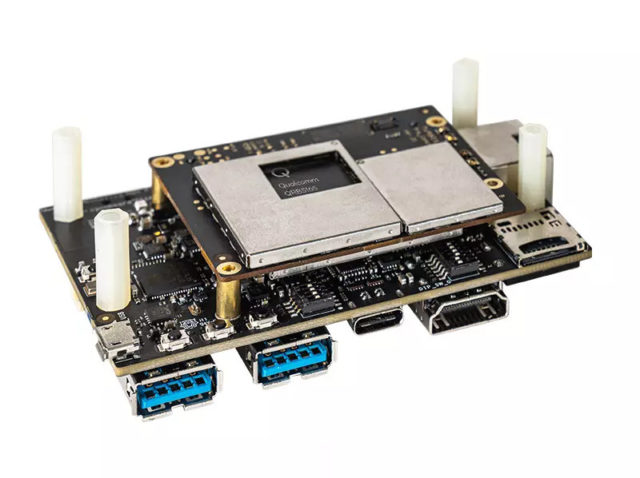
The 96boards compliant board is equipped with Qualcomm QRB5165 octa-core Kryo 858 (Cortex-A77) CPU @ up to 2.84 GHz, 16GB of LPDDR5 RAM, 128 GB of UFS3.0 storage, 15 TOPS of AI processing power, supports 3D depth cameras and offers plenty of expansion I/Os.
The platform can run Linux, Ubuntu, and Robot Operating System (ROS) 2.0, and supports OpenCL and OpenGL ES APIs, as well as OpenCV for computer vision applications.
The “Core Kit” with the mainboard, QRB5165 SoM, power supply, and USB cable can be purchased for $495, there’s also a “Vision Kit” with tracking sensors and a camera going for $695.
HoneyComb LX2K SBC – High-speed networking and Arm workstation
SolidRun HoneyComb LX2K Arm SBC features an NXP LX2160A 16-core Arm Cortex-A72 processor, supports up to 64GB RAM, offers high-speed networking thanks to up to 4x SFP+ 10GbE cages and a Gigabit Ethernet port, as well as four SATA ports, a PCIe x8 slot, M.2 SSD slot and more. Those features make the board suitable for both networking applications, and be integrated into an Arm workstation for native application development.
Ubuntu, Debian, and Fedora can run on the board, but SolidRun said it was working on SBSA compliance a while ago, meaning it should boot any Linux SBSA compliant distributions, but I’m not sure about the status. The source code can be found on Github.
HoneyComb LX2K can be purchased for $750 with a 64GB eMMC flash, RAM not included. The board complies with 96Boards Enterprise Edition specification.
Khadas VIM3 Pro SBC – Cortex-A73 for bleeding-edge software
Khadas VIM3 Pro SBC may seem out of place in this list with an hexa-core Cortex-A73/A53 Amlogic A311D processor, coupled with a paltry 4GB of RAM and a 32GB eMMC flash, but that’s still a powerful platform, for instance, compared to Raspberry Pi 4 8GB, and it also includes of 5 TOPS NPU, offers good networking with Gigabit Ethernet and 802.11ac WiFi 5 with RSDB support, and higher capacity and faster storage is possible via an M.2 NVMe SSD. There’s also a 40-pin expansion header, wide power input (5V to 20V) with USB-C port, an accelerometer, and more.
The hardware is already pretty cool, but what makes Khadas VIM3 Pro, or even its little brother Khadas VIM3 Lite is that many application developers and software engineers appear to use the platform to develop the latest version of their software/app. For instance, Khadas VIM3 is an official Android reference board, and Collabora develops Panfrost / PanVk open-source graphics driver on the little board.
Khadas VIM3 Pro can be purchased for $139.99 on sites like Amazon or Aliexpress.
So here’s the list for the first half of 2021, and I’m hoping some new boards to become challengers later this year, notably with the launch of the Rockchip RK3588 processor. If you disagree with this list and would have included other boards, let us know in the comments section.

Jean-Luc started CNX Software in 2010 as a part-time endeavor, before quitting his job as a software engineering manager, and starting to write daily news, and reviews full time later in 2011.
Support CNX Software! Donate via cryptocurrencies, become a Patron on Patreon, or purchase goods on Amazon or Aliexpress


